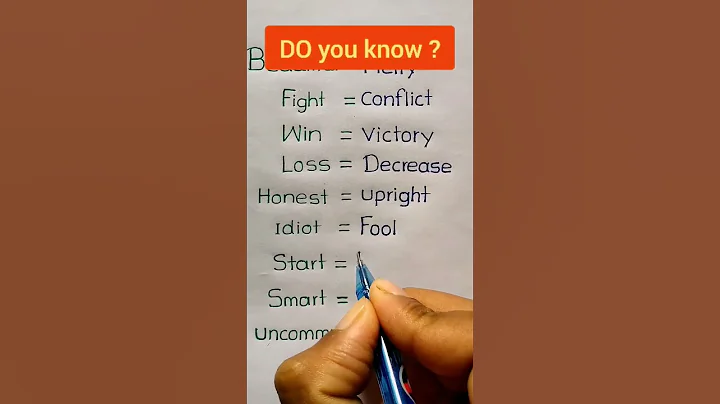
1831, Gauss expressed his fear of "real infinite" and
I object to the use of infinite quantity as a complete thing. Such usage is never allowed in mathematics. Infinity is just a way of speaking, and its true meaning is that some ratios approach an infinite limit, while others can increase indefinitely.
Cantor both agree with and disagree with Gauss's point of view. He wrote about the Infinite Real in 1866 that
, despite the essential difference between the Infinite Latent and Infinite Real, the former means a variable finite quantity that increases to exceed all finite limits, while the latter is a fixed constant that exceeds all finite quantities, but they are too often confused.
Cantor insists that the indiscriminate negation of reality "infinity" is a violation of the nature of things. In 1901, Russell said that
Zeno cared about three issues - infinitesimal, infinity and continuous... Weirstras, Dedekin and Cantor completely solved them. This achievement is probably the greatest achievement that this era can boast about… The infinitesimal problems were solved by Weirstras, and the other two solutions started by Dedekin and finally completed by Cantor.
Georg Ferdinand Lud-wig Philipp Cantor

Cantor's genius was recognized early (before the age of 15), and had a fascinating interest in mathematical research. In 1862, Cantor began his college life in Zurich . The following year, he transferred to Berlin University . At the University of Berlin, he specializes in mathematics, philosophy and physics. His math instructors are Kummer , Weirstras and Cronek (academic enemy).
In Berlin, Cantor studied Gauss' " Arithmetic Research " in depth, wrote his doctoral thesis, and obtained his doctoral degree in 1867. His paper discusses the difficulties left by Gauss on the x, y, z integer solutions of the indefinite equation

, where a, b, and c are any known integers. Cantor's earliest love was Gauss' number theory. Under the influence of Weirstras, he soon took a different approach and entered a strict analysis from this theory, especially the theory of triangular series ( Fourier series ). The elusive difficulty of
The theory inspired Cantor to study the basis of analysis more deeply, which led to his comprehensive study of the mathematical and philosophical problems of infinity itself, which is the basis for all problems such as continuity, limits and convergence. Cantor published his first revolutionary paper on infinite series when he was almost 30 years old. The collection of all algebra numbers established by Cantor in this paper shows that he is a unique and creative mathematician.

1874, when Cantor was 29 years old, he published his first revolutionary paper on set theory . In the same year, he married Valli Gutman and gave birth to two sons and four daughters. The young couple often dated Dedkin during their honeymoon on Interlaken . Dedekin was perhaps the only top mathematician at the time who tried to seriously understand Cantor's subversive theory.
1874 This pioneering paper has a completely unexpected, highly abnormal nature that establishes all algebra collections. If r satisfies an n-order algebraic equation with rational integer (normal integer) coefficients, and if r does not satisfie such an equation with a number of times less than n, then r is an n-order algebraic number.
This can be promoted. Because it is easy to prove that a type is

where c_i is any equation of known algebra numbers, and any of its fundamental bodies is an algebra. For example, according to this theorem, all the roots of the equation

are algebraic numbers, because the coefficients are algebraic numbers, the first coefficient satisfies

The second coefficient satisfies

The third coefficient satisfies

In this way, the number of times of the equation is 2, 2, and 3, respectively.Imagine a collection of all algebraic numbers. Among these numbers,
- has all the regular rational integers 1, 2, 3,... because any of them, for example n, satisfies the algebraic equation x-n=0, and the coefficients (1 and -n) in the equation are rational integers.
- But besides these, the set of all algebraic numbers also includes all the roots of all rational integer quadratic equations, all the roots of all rational integer cube equations, etc., to infinity. A set of all algebraic numbers should contain infinite elements more than a subset of its rational integers 1, 2, 3, ….
Isn’t this very obvious intuition? It may indeed be obvious, but it is precisely wrong. Cantor proves that a set of all rational integers contains the same many elements as a set of all algebraic numbers. Cantor proves this ensemble theory with a "one-to-one correspondence" method, which shows the difference in attitudes between mathematicians and philosophers on the issue of "numbers" or "quantity".
Mathematicians never use quantities themselves to define quantities, but philosophers do this; mathematicians define the equality of quantities, their sums and their products, and these definitions determine the entire mathematical properties of quantities . Mathematicians even formulate symbols in a more abstract and formal way, while specifying the rules that symbols must follow; these rules are enough to represent the characteristics of these symbols and give them mathematical meaning. Mathematicians use arbitrary conventions to create mathematical entities. Not all mathematical thoughts schools agree with this approach, but they at least propose a philosophy of the following cardinal definition.
When all elements in two sets can correspond one to one, it is said that the two sets have the same cardinality.
For example, the set (x, y, z) and set (a, b, c) have the same cardinality because we can pair x, y, z in the first set with a, b, c in the second set. Furthermore, if there are 20 married couples sitting together for a meal, the husband's set will have the same base as the wife's set. As another example of this equally "obvious", we think of Galileo's set of all positive integers squared and all positive integer sets.

Think carefully. If all squared numbers in natural numbers are eliminated, then the remaining numbers are exactly as many as the original ones. Whether we like it or not, this naked miracle appears before us: A part of a collection can have the same cardinality as the entire collection. intuition has been greatly overrated. Intuition is the root of all superstitions.
At this stage, a top-notch important question arises. What is a collection or class in ? Just imagine all the sets of rational integers and ask yourself whether you can treat this whole body as a definite object of thinking in your mind, just as easy to understand as three-letter classes x, y, and z. In order to understand the super-poor number created by Cantor, he asked us to do exactly this.
Now let’s continue to talk about the definition of “cardinality”. If two sets or classes elements can be paired one-to-one, they are similar to . How many elements are there in the set (x, y, z)? Obviously there are 3. But what is "3"? The following definition gives the answer
The number of things in a given class is similar to that of all classes of the given class.
This definition was proposed by Gottlob Frege in 1879 and again by Russell in 1901. It has a little better than other definitions of "cardinality of classes", i.e. it can be applied to both finite classes and infinite classes.
Cantor's "All algebraic numbers have classes similar to all justified integers" 's amazing result, just the first of many completely unexpected properties of infinite classes.
, for example, considers "existence" beyond the number. People suspect that when n tends to infinite, the number determined by the limit of

is beyond, but we cannot prove it.
surpasses numbers is not the root of any rational integer coefficient algebraic equation.
Naturally, you will ask a question: How many does surpass the number ? Are they more or less than integers, rational numbers or whole algebraic numbers? According to Cantor's theorem, the number of integers, rational numbers and total algebraic numbers is equal to . This problem is attributed to: Can transcend numbers with 1, 2, 3,... be traversed (numbered, numbered)? Are all classes (sets) that transcend numbers similar to all classes with rational integers? The answer is no, surpasses many more (more infinity) than integers.
If a class (set) is similar to all classes with rational integers, this class is countable. An element in a countable class can be used 1, 2, 3,...number; an element in an uncountable class cannot be used 1, 2, 3,...number. There are more elements in an uncountable class than things in a countable class . Do uncountable classes exist? Cantor proves that they exist. In fact, the classes of all points on any line segment are uncountable, no matter how small the line segment is.
From this we can know why transcendent numbers are uncountable. We know that any root of any algebraic equation can be represented by points on the plane of Cartesian geometry. All these roots form a set of all algebraic numbers, which Cantor proves to be countable. However, if the points on a single line segment are uncountable, then it can be inferred that all points on the Cartesian plane are also uncountable. Algebraic numbers are dotted on the plane, just like stars embellishing the dark night sky, and dense black is the sky beyond numbers.

proof about Cantor, most notably, it does not provide even a way to construct a transcendent number. According to Cronek, all these non-constructive reasonings are illogical.
Since Cantor's reasoning in his infinite class theory is mostly non-constructive, Cronek sees it as a dangerous class of mathematical madness. Because Cronek saw mathematics walking towards the madhouse under the leadership of Cantor, and at the same time, because he was fanatically committed to the mathematical truth he believed, he used all the weapons at hand to attack " Real Infinite Theory " and Cantor violently and viciously. The ending of this tragedy was not the set theory that entered the madhouse, but Cantor entered the madhouse.
In the spring of 1884, Cantor experienced his first mental breakdown at the age of 40, and thus entered a psychiatric clinic. A deep wave of frustration made him feel inferior in his eyes, and he began to doubt the correctness of his work. Some of his best work on the correct theory of infinite is done in the intervals of two episodes. When he recovered from his onset, his mind was particularly clear.
With the advent of the new century, Cantor's work gradually began to be accepted by people and is considered a major contribution to the entire mathematics, especially to the foundation of analytics . But for this theory, unfortunately, it is beginning to appear at the same time that still affects it. These may ultimately be the greatest contribution of Cantor's theories to mathematics, as their unexpected existence around infinite logic and mathematical reasoning promotes the critical movement now throughout deductive reasoning.
Cantor's most amazing result is obtained in the Uncountable Set Theory. The simplest example of an Uncountable Set is the set of all points on a line segment . Here I can only talk about one of his simplest conclusions. Contrary to what can be predicted intuitively, two line segments of varying lengths contain the same number of points. It is not difficult for us to see the rationality of Cantor's conclusion. Place line segments AB and CD of varying lengths as shown in the figure below. The line segment OPQ intersects CD at point P and AB at Q; in this way, P and Q are paired. When OPQ rotates around 0, point P moves on CD, while Q moves on AB, each point on CD has and only one point on AB "pairs" with it.

can prove a more unexpected result. Any line segment, no matter how small, contains as many points as infinitely long straight lines.Furthermore, the line segment contains as many points as in the entire plane or the entire three-dimensional space or the entire n-dimensional space (here n is any integer greater than zero).
Here, we have not tried to define a class or a collection. Yet the current debate seems to require some clear and self-consistent definition. A set represents its characteristics by 3 characteristics.
- It contains everything with a certain deterministic property (such as red, or volume, or taste);
- Things without this property do not belong to this set;
- Each element in the set can be identified whether it is the same or different from other things in the set. The set itself can be grasped as a whole.
At this point, we can review the entire mathematical history and pay attention to the two expressions that appear repeatedly in almost all mathematical works. One category is the expression " we can find an integer greater than 2 in ", or " we can choose a number smaller than n and greater than n-2 in ". What is obvious difference is another idiom that repeatedly appears in mathematical writing, " has ". For example, "there is an integer greater than 2" or "there is a number less than n and greater than n-2". For sets that appear in Cantor's theory (as defined above), existence cannot be proven.
These two ways of speaking divide mathematicians into two categories.
- people who say "we can" think (perhaps subconsciously) that mathematics is purely human invention;
- people who say "existence" think that mathematics has its own "existence" beyond humans. We can only accidentally discover the "eternal truth" of mathematics during our journey of life. This is very similar to a person walking in a city and encountering many streets, and he has nothing to do with the planning of these streets.
An important example of how set theory is viewed in the "existence" way is provided by the famous Zemero Assumption (Axiom).
is for its elements M (that is, M is a set of some sets, or a class of some classes). These sets P are not empty and do not intersect (that is, no two sets contain common things), and there is at least one set N, which happens to contain one element in each set P that constitutes set M.
Comparing this assumption with the definition of the aforementioned set (or class) shows that if the set M contains, for example, infinite number of disjoint line segments, the person who says "we" will not think that this assumption is self-evident. However, this presumption seems quite reasonable, but the attempts to prove it have failed, and it is quite important in all issues related to continuity. How was the assumption of
introduced into mathematics? This will lead to another unsolved problem of Cantor's theory. A collection of countable elements that are different from each other, like all bricks on a wall, can be easily discharged in order; we only need to press 1, 2, 3, … to count them.

But how do we sort all points on a straight line? After all, between any two points on the line, we can find another point on the line "" or " exists ". If we count two adjacent bricks on the wall every time, another brick appears between them, and our counting becomes chaotic. However, the points on the straight line do appear to have some order, because we can say that one point is on the left or right of another point. The effort to sort points on a straight line was not successful. Zemero proposed his assumption to make such an effort easier, but it itself has not been generally accepted as a reasonable assumption.
returns to Cantor theory. Does it "exist" or can we "construct" a set that is neither similar to all sets of justified integers nor to the sets of all points on a straight line? The answer is not to know.
We have mentioned Frege , who defines "classes similar to all classes of a given class" as the cardinality of this given class. Frege spent years trying to put the mathematics of numbers on a reliable logic basis.His lifelong work was his "Basic Rules of Arithmetic", and the following speech in Volume 2 ended:
A scientist could hardly encounter something more embarrassing than this, that is, when the work was completed, its foundation collapsed. When this book was about to be printed, a letter from Mr. Bertrand Russell put me in this situation.
Russell constructs a set S:S consists of all sets that do not belong to themselves. Is this collection its own element? You can think about it after a little thought, no matter which answer is wrong. Russell proposed his "circulating argumentation principle" as a remedy: "Anything that involves all elements of a set must not be the elements of that set."
To get mathematics out of this dilemma, Hilbert and Browell are committed to putting mathematical reasoning on a reasonable basis, although their methods and philosophy are extremely opposed in several aspects.
Hilbert

Hilbert searches for the origin of his mathematical philosophy in Greece . He restarted the plan of Pythagoras , that is, given a set of strict and fully determined assumptions (axonomy), a mathematical argument must start from these assumptions according to strict deductive reasoning. Hilbert enlisted the public development outline of mathematics to be more precise than the Greeks, and published the first edition of his classic work on the basis of geometric in 1899. One requirement of Hilbert was that the assumptions proposed for geometry should prove self-consistent, which the Greeks seemed to have thought of. In order to make such a proof of geometry, he pointed out that any contradiction in geometry developed from these presumptions implies an arithmetic contradiction. In this way, the problem returns to proof of arithmetic consistency, until today.
So we return again and ask what "number" is . Both Dedekin and Frege set their sights on "infinity", Dedekin defines irrational number with his infinite class; Frege defines cardinality with his class similar to all classes of a known class. Hilbert also went to Infinity to find the answer, and he believed that Infinity is necessary to understand finite . He strongly believed that the Cantor system would eventually be liberated from purgatory, and
In my opinion, this (Cantor) is the most praiseworthy fruit of mathematical thought and is indeed one of the highest achievements of human intellectual activities. No one can expel us from the paradise created by Cantor for us,
Browwell

At the moment of Hilbert's excitement, Browell appeared, saying that it completed its mission with the method of Hilbert's assumption that guarantees the exemption of contradictions - no contradictions are created, but no valuable things are obtained by this method; a wrong theory, even if it does not end up in contradictions, is still wrong.
Browwell's root of this objection is something new - at least mathematically new. He opposed the unrestricted application of the logic of Aristotle , especially when dealing with infinite sets, and insisted that contradictions will inevitably arise when such logic is used in sets that cannot be precisely constructed in the Cronecic sense (must provide a rule of the process so that things in the set can be produced by it). rows of middle law is only reasonable when used in finite sets.
Aristotle invented his logic as a set of rules for finite sets, building his method on human experience with finite sets, and there is no reason to think that when applied to finite logic to infinity, it will continue to produce consistent results. It seems reasonable when we recall that the true definition of an infinite set is to emphasize that part of an infinite set can contain as many elements as the entire set; when "part" means some rather than everything, the situation emphasized by the definition will never happen for a finite set.
Here we have the root of trouble in the Cantor real infinite theory that some people think.As for this definition of sets, "combining" all things with certain properties to form a "set" is not suitable as the basis of set theory, because this definition is either not constructive (in the Cronek sense) or conceives constructiveness that no one can make. Browell declared that the application of the law of exclusion in this situation is at best a heuristic guide to such propositions that may be true, but not necessarily, even if they are inferred strictly using Aristotle's logic. He also said that over the past half century, many false theories (including Cantor's) have been established on this fragile basis.
The debate over the past third century has added new areas to the vast territory of mathematics - including brand new logic. New fields are rapidly integrating with the old fields and being in harmony. The spirit of mathematics will last forever. As Cantor said, "The essence of mathematics lies in its freedom."











